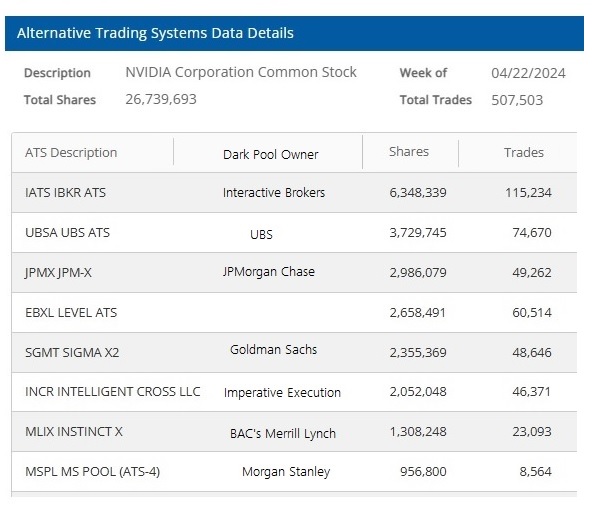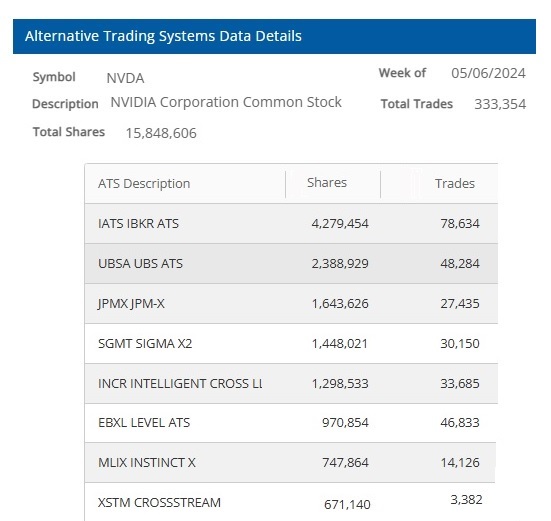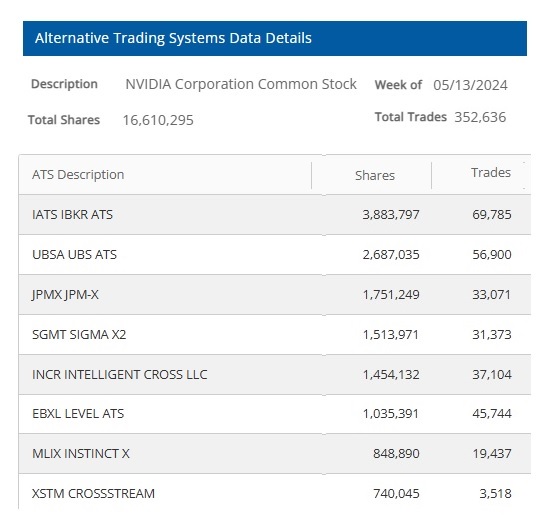By Pam Martens and Russ Martens: June 10, 2024 ~
 The much-hyped artificial intelligence chipmaker, Nvidia (ticker NVDA), reached a market cap of $3 trillion on Thursday, beating out Apple as the second most valuable company, just behind Microsoft. This morning, Nvidia’s 10-for-1 stock split will become effective, reducing its share price to, ideally, entice more retail investors.
The much-hyped artificial intelligence chipmaker, Nvidia (ticker NVDA), reached a market cap of $3 trillion on Thursday, beating out Apple as the second most valuable company, just behind Microsoft. This morning, Nvidia’s 10-for-1 stock split will become effective, reducing its share price to, ideally, entice more retail investors.
Year-to-date, Nvidia’s stock price is up 144 percent through the closing bell on Friday.
The company was founded on April 5, 1993 and lived the bulk of its existence in obscurity until a New York Times article appeared on September 1, 2017 with this headline: “Why a 24-Year-Old Chipmaker Is One of Tech’s Hot Prospects.”
Browsing the company’s prolific newsroom reveals no shortage of bold pronouncements. A June 2 press release carries this seismic prediction:
“The next industrial revolution has begun. Companies and countries are partnering with NVIDIA to shift the trillion-dollar traditional data centers to accelerated computing and build a new type of data center — AI factories — to produce a new commodity: artificial intelligence….”
Our first instinct was to take a look to see how much trading in Nvidia’s shares is occurring in Dark Pools – non-transparent trading platforms operated by some of the biggest trading houses on Wall Street (which are also, insanely, allowed to own some of the largest federally-insured U.S. commercial banks which hold trillions of dollars in deposits).
Wall Street’s self-regulator, FINRA, began providing some Dark Pool data back in 2014. Unfortunately, the trading data for each Dark Pool and the respective stock it is trading is lumped together for the entire week, not by the minute or hour or day, and the data arrives to the public two weeks late for big cap stocks and four weeks late for smaller companies.
The charts below show the top eight Dark Pools that made the largest number of trades in Nvidia’s stock for a recent three weeks that FINRA has made trading data available. The Dark Pool owned by Interactive Brokers has consistently been the largest trader of Nvidia’s shares. In second and third place has been global banking behemoths UBS and JPMorgan, respectively. Dark Pools owned by other global trading powerhouses, Goldman Sachs, Morgan Stanley, and Bank of America’s Merrill Lynch, have also ranked in the top eight.
Interestingly, JPMorgan has shelled out $250 million in fines to the Office of the Comptroller of the Currency; $98.2 million to the Federal Reserve and $100 million (netted down from $200 million) to the Commodity Futures Trading Commission since March for failing to provide proper surveillance of “billions” of trades. The regulators were deafeningly silent on whether JPMorgan’s Dark Pools were involved in these infractions. (See here, here and here.)
Following the stock market crash of 1929 (which ushered in the Great Depression), the U.S. Senate Banking Committee conducted an exhaustive investigation into the trading structure and trading practices on Wall Street. The titans of Wall Street were put under oath and troves of documents were subpoenaed. The Senate investigations focused on the collusive dealings of “pools.” The 1930s Senate investigation found the following:
“A pool, according to stock exchange officials, is an agreement between several people, usually more than three, to actively trade in a single security. The investigation has shown that the purpose of a pool generally is to raise the price of a security by concerted activity on the part of the pool members, and thereby to enable them to unload their holdings at a profit upon the public attracted by the activity or by information disseminated about the stock. Pool operations for such a purpose are incompatible with the maintenance of a free and uncontrolled market.”
The Senate Banking Committee of 1934 concluded as follows:
“The conclusion is inescapable that members of the organized exchanges who had a participation in or managed pools, while simultaneously acting as brokers for the general public, were representing irreconcilable interests and attempting to discharge conflicting functions. Yet the stock exchange authorities could perceive nothing unethical in this situation.”
As Wall Street On Parade has previously reported, U.S. regulators are not only allowing these quasi stock exchanges to operate in darkness, they are allowing Goldman Sachs, Bank of America Merrill Lynch, JPMorgan Chase and others to trade their own publicly-traded bank stocks in their own Dark Pools.
The U.S. stock market, once the envy of the world, remains dangerously opaque today, in no small part because of the sick revolving door structure between Wall Street and its regulators.
Congress does not feel compelled to tackle the problem because corporate media has chosen to ignore the mushrooming problem. Even after bestselling author and Wall Street veteran, Michael Lewis, went on the heavily watched 60 Minutes program on CBS in 2014 and told viewers that “The United States stock market, the most iconic market in global capitalism is rigged,” Congress and the SEC have continued to dance around the problem.
Until the public demands change, the darkness will continue to deepen in increasingly dangerous ways.




